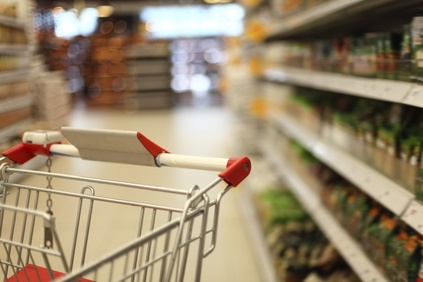 Image From: http://www.ohl.com/industries/consumer-packaged-goods Image From: http://www.ohl.com/industries/consumer-packaged-goods The process of restructuring continuously flows like water down the waterfall of CPGs ( Consumer Packaged Goods), and it washes away some marketing employees at the same time. An example would be Procter and Gamble, where it made the business decision to cut costs. It had a projected $10 billion worth of savings (a billion of that amount would be savings from non-advertising promotional expenses) in a span of half a decade. This move was designed to address the issue of sluggish sales, share losses to competitors, and mediocre earnings. Other packaged consumer goods firms have followed suit, with the likes of Energizer Holdings, Kimberly-Clark, and Colgate-Palmolive coming up with their announcements regarding plans to take away some of their headcount. This is bad news for a lot of staff, since the corporate layoffs will affect more than a thousand people. Going back to P & G, it is not enough that they would lay off some workers from the marketing department and other nonmanufacturing sectors. They even announced that they would continue to take away their labor force overhead by 2 or 4% per year for the following three years. Because P & G is being pressured by investors to cut more costs, the competition is also joining in to maintain their marketing expenses and competitive prices. Now that all of this is happening, the key query is how the marketers will make use of whatever savings they get from reducing their number of employees. Will they invest in innovation and advertising, or will they just step on one another with their never ending price wars? Based on information provided by P & G, they have utilized their packaged consumer goods and restructuring savings for promotional expenses instead of bringing it to the bottom line. They are still experiencing slow growth, so the company might not be able to keep the price gaps that they had before.
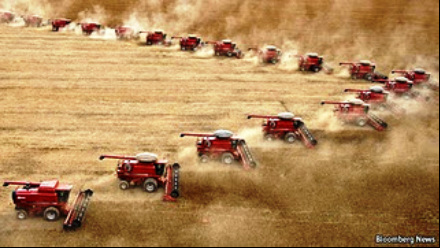 Image From: http://oilprice.com Image From: http://oilprice.com The present worldwide system of food is dependent on transport and fuel. As all the countries of the world continue this “life on the fast lane” lifestyle, fuels are almost bound to become more expensive in the long run. This will make the present, agricultural production system that relies on fuel less secure, and food more costly. Thus, it is mandatory to market a community that is self-sufficient when it comes to food and minimize the need to use fuel in the overall food system. Any grocery exporter with experience will be aware that the link between oil and food is systematic, and the rates of both fuel and food have gone up and gone down more or less in sync during the past few years. Contemporary agriculture makes use of oil items to keep farm machinery going, to transfer farm output to the end user (the customers) or to transfer other products into the farm. Oil is usually employed as input in the chemicals that are used in agriculture. The spikes in oil prices would therefore cause tension on all the factors of industrial food systems. All of these happenings have caused concern that volatile and high crude oil prices may result in the prices of food getting more and more expensive as the days pass. Aside from this, as the oil prices continue to go up, so will the demand for those biofuels (liquid fuels that are not made out of fossils that can serve as substitutes for petroleum products inside motor vehicles and combustion engines). The downside to this is that biofuels are normally created out of different agricultural products such as corn. As the typical grocery exporter will demand a lot out of these substitute fuels (along with other grocery exporters from around the globe), the prices of crops will skyrocket, resulting in food that is less affordable.
 Image From: http://www.philstar.com Image From: http://www.philstar.com The unions of farmers in the Philippines have been complaining about those smugglers who have been taking their livelihood away from them for a long time now, and they are hoping that the government will give them the help and support that they need. What is really going on with the exports and imports of agri-food items in the Philippines? Are trade realities actually reflected by the official statistics? Or are the statistics agencies at fault since they have been under-documenting or under-reporting? This trading in the Philippines post will make use of some trade data from the United Nations which people can view if they visit the UN Trademap. It will talk about the products that are either being imported or exported in this nation. The state of rice imports and exports According to statistical data, the Philippines has brought in an estimated 581,000 tons worth of the staple food from Vietnam during the year 2011. This amount increased the next year when the nation imported 823,000 tons of rice. Vietnam however has not provided any export data for each country since the year 2010. Could the reason for the delay in releasing the export data be something controversial? While this is going on, the USDA (United States Department of Agriculture) released a report about the Philippines bringing in an estimated annual amount of 1.5 million tons of rice, mostly from Vietnam. Why are the reports conflicting? Could the UDSA be making a mistake? During April 2013, the local Customs police discovered a lot of smuggled rice in the city of Cebu. The total worth of the stolen rice inside the 1,169 vats from Vietnam was around P1.2 Billion (or $29 Million). Based on trading in the Philippines statistics, one of these 40 feet storage devices would hold a maximum of 40 tons of rice. The entire volume is approximately 46,760 tons.
 Image From: http://globial.com Image From: http://globial.com What are the factors that will encourage a nation to import or export merchandise? Because the expenses that are associated with manufacturing differ within countries, the same commodities will be distributed for various prices in various locations. A nation exporting or importing their items will depend on the rate that the local manufacturers charge relative to the manufacturers from around the world who produce the same thing. For example, nations such as China will export their textiles because they can manufacture these with fewer expenses and lower rates compared to the rest of the distributor of customer packed goods in the world. On the other hand, nations like the United States will import textiles from China because the American textile manufacturers go through more expenses and therefore charge expensive rates compared to the rest of the world. If you are to observe any number of items that you use every day, like your food, shoes, a pen, or a laptop, you will notice that all of these products were created in various locations. Most of these foreign goods arrived through commerce. It is in the interest of most of these nations to engage in commerce since the rule of “comparative advantage” states that global trade benefits every nation by letting them specialize on their expertise. The concept behind the competitive advantage begins with a simple start, making this intuitive. If an entity (a distributor of customer packed goods, location or nation) can manufacture a product with less expense compared to a second entity, and the second entity is able to manufacture a different item with less expense compared to the first entity, then it is clear that this situation would benefit both entities by trading the inexpensive commodity that each entity has. If they agree to do this business transaction, both entities will gain something from this commerce.
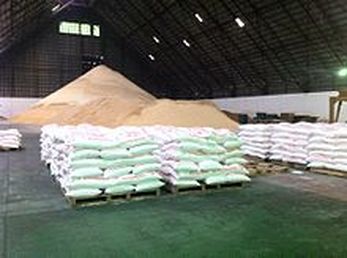 Image From: http://en.wikipedia.org/wiki/Economy_of_the_Philippines Image From: http://en.wikipedia.org/wiki/Economy_of_the_Philippines The Republic of the Philippines is first and foremost a country that is founded on agriculture. Around two thirds of the populace makes their living through farming, and 47% of the land is abundant in agriculture. Ironically though, even if the nation is rich in natural resources and huge agricultural land, the farmers are still marginalized and poor. The Philippines had to bring in agricultural items such as rice (the staple food of the Filipino) because of minimal productivity, a population that is still growing at a fast rate, and the demolishing of major agricultural lands to make way for commercial use. During the year 2008, the local government used a lot of its funding for rice imports, which were then sold at cheap prices. While this cost the consolidator in the Philippines and the government a lot of money, they did this to prevent widespread panic amongst the citizens. Rather than doing service for the farmers, the drive of the Philippines to be economically independent via conventional farming that employed extensive and commercial agro-chemicals and inorganic fertilizers resulted in farmers who sank deeper into poverty and extreme debt. A lot of these rice farmers have become dependent on the seed subsidies, fertilizers or price support from the local government. The problem was that some of their produce declined or stagnated because of applying all of these non-organic instruments for long durations. A concerned group of people in PAKISAMA (Pambansang Kilusan ng mga Samahang Magsasaka) conceptualized a project that would boost the services of the organizations that the farmers were involved in, as well as their communities to guarantee collective, coordinated, and institutionalized actions for surviving the fluctuating food prices via policy dialogue, marketing, and sustainable agricultural manufacturing. These actions would concentrate on the consolidator in the Philippines and the minor farmers who produce vital food items in the county and streamline the process so that all project activities could easily be designed and implemented.
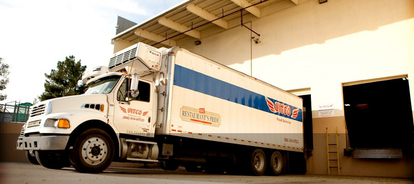 Image From: http://www.ifdaonline.org Image From: http://www.ifdaonline.org A moat is defined as a broad and deep ditch which may be filled with water or dry, and historically surrounds a town or castle to offer it a primary defensive line. On the other hand, an economic moat is a technical term that was popularized and invented by business tycoon Warren Buffett. According to Buffett, this term talks about the ability of a business to keep their competitive advantages over the international food distributor and the competition to safeguard its market share and long-term profits from other companies that offer similar goods and services. To make a long story short, the economic moat is a factor that can possibly provide a sustainable competitive advantage to an industry. Here are some ways for an enterprise to get an economic moat: Low Cost Manufacturing The corporations that can deliver their services or commodities at an affordable cost (normally because of captive raw material sources or economies of scale), have a unique competitive advantage since they have the power to undercut the competition on price. Examples include coal mines or iron ore mines. High Switching Expenses Switching expenses refer to the one-time costs or inconveniences that the consumers go through when they are transferring from one service or item for another. The best examples of this include banks, ISPs (Internet Service Providers), and telecom corporations. The Network Effect This effect takes place when the value of a specific service or product goes up for the existing and new customers as more consumers use it. Excellent examples of the Network Effect are social networking sites such as LinkedIn or Facebook, and the networks that credit cards use. Subtle Assets A handful of firms have an edge over their competition due to distinct subtle, intangible or nonphysical assets which involve an international food distributor. These intangibles cover things like geographic advantages, brand names, government approvals, and intellectual property rights.
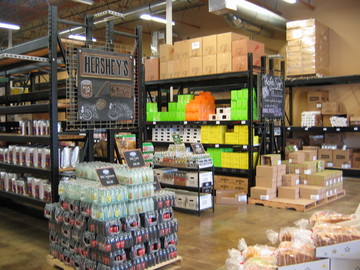 Image From: http://www.xenfore.com Image From: http://www.xenfore.com Wholesale food dispersal teams are people who work like sales brokers between the merchants and the manufacturers, or in some instances, individual clients. In general, these groups who work in the business of wholesale food are stationed in a food storage building or warehouse. Wholesale suppliers deliver a vast assortment of food items every day, and these include meat and dairy products, fruits and vegetables, seafood, frozen foods, and the confectionaries (examples include chocolates, candies, and ice cream). The wholesale food distributor can also specialize in a particular food product, and can also be located in the current marketplace. Trader wholesalers normally do business by selling supermarket goods, while the systems distributors are usually experts in special items like tea, coffee, seasonings, and spices. Some specialty wholesalers have also appeared on the scene, concentrating on the dispersal of poultry or dairy items. As mentioned earlier in this post, these people who work in wholesale food generally stay in a warehouse and do not normally interact with walk in visitors since the items that they sell are not always accessible or on display. The majority of clients make plans for an appointment so that the wholesaler is given a chance to provide a full presentation of the merchandise that they sell. Clients are normally given a number of processing choices for any bulk orders they may have. The wholesaler would normally take care of these tasks, which involve the packaging and cutting, and even the seasoning of the products that are needed to meet the order. Aside from this, if the buyer chooses it, the food items can be bought minus the processing part. For the veteran wholesale food distributor, these situations are considered normal with the sellers who decide to package and process their own food items, either to reduce their operational expenses or because they use their own distinct methods of promoting their products.
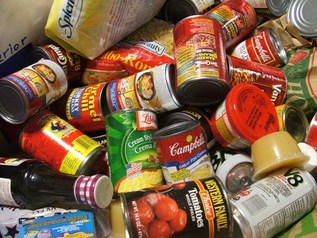 Image From: http://jclocalaid.org Image From: http://jclocalaid.org The Philippine government has been executing a Food Assistance Campaign as a temporary calming invention for the growing number of its children who are malnourished. Complementary feeding has been a popular and effective strategy that has been implemented in nations that are concerned with the issue of malnutrition. The Food Assistance Campaign reportedly covers an average of 0.3 million lactating and pregnant women, 1.2 million schoolchildren and 1.3 million preschoolers per year. Critics are claiming that food assistance is a waste of resources, a temporary solution to the problem, and instigates a mentality where people will not work hard and just expect hand-me-downs. However, based on the statistics of a Philippines food distributor, this program may have advantages in terms of political impact, social or behavioral aspects, and nutritional factors. The instances where food assistance had a positive effect on the social and behavioral factors of Filipinos include changes in practices and attitudes of child care providers, and more mothers learning more about the importance of child feeding or joining community services. As far as positive political impact is concerned, it involves the demonstration of how concerned the government is for a big majority of the population. The decision of the government to implement a food assistance campaign depends on the purpose of the program. If the primary goal is to revitalize the mothers and the children who are malnourished, it is best to perform supplementary feeding. On the other hand, if the goal is preventive (referring to helping the children who are at risk of stopped growth due to their situation in life, such as living in a house with limited resources), increased usage of food from sources such as food-for-work, food subsidies or food stamps can dramatically enhance welfare. Regarding the subject of supplementary feeding campaigns, the nation has employed different schemes for dispersing food rations thanks to the advice of a Philippines food distributor. The government needs to address the concern of the proper times for feeding because the nutrition workers regularly have a hard time encouraging mothers to bring their kids to the feeding centers.
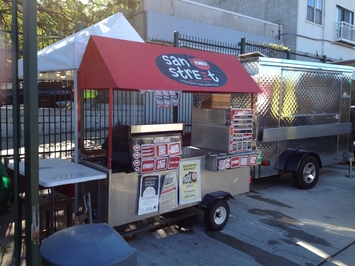 Image From: http://upnorthbusiness.files.wordpress.com Image From: http://upnorthbusiness.files.wordpress.com The main objective of choosing a food dealer for your mobile food business is to locate one that will deliver fair trading prices and products of top quality. The best part about this practice is that your business has the chance to collaborate with a number of food traders, but keep in mind that there are instances where your firm needs multiple dealers for your merchandise, particularly produce and meat. The good news is that you might be able to locate food suppliers who can offer most of your supplies from one facility. Major national dealers can deliver big discounts on the prices of their goods since they disperse a lot of merchandise. While their small orders have the tendency to be too much for one mobile food business, you can befriend other franchises in your location to place enough bulk orders to comply with their minimums. You probably will not be able to buy everything you need from one dealer because monitoring many invoices will waste your effort and precious time. Try to achieve your requirements with the least number of suppliers. So that you will not take too long in searching for a particular trader, here are some additional tips for locating prospective suppliers: Use the power of the Internet You can find almost everything you need for your business by performing online searches. Employ online business directories which catalog dealers and even locate traders according to the products that you are searching for. A lot of these websites allow you to input your zip code so that you can narrow your specific searches within your locale. One important advantage of using internet directories is that they regularly give information on traders who sell items at competitive rates. Go to trade shows about the restaurant industry Food suppliers can get useful information on the different services and products that a dealer showcases when they attend these conventions. You can get trader literature, and have the chance to speak to the representatives of restaurant suppliers.
 Image From: http://www.ho-chunknation.com Image From: http://www.ho-chunknation.com The questionnaires about nutrition expose the fact that there are households that shelter some malnourished individuals, despite the similarities between the structure of the house and the income level. Most causes have been credited to this occurrence, like differences in demand for time, food preferences, purchasing power, social networks, kin, and so forth. All of these aspects will impact the household as far as its capacity to get food is concerned, but they do not clarify what happens to the consumables when it gets to the house. However, the knowledge about the various ways of food distribution within the house could give answers as to who gets the most benefits, and to what degree these advantages are. Similar to the limited knowledge about the allocation of food in the house, there is also limited info on how the food campaigns could impact this. But then, food campaigns that concentrate on the residential area are created with particular objectives in mind. Being familiar with the variance in intra-household food allocation practices can provide closure to the reason for the desired result to not be achieved. Information about these intra-household food allocation processes can help in the planning and efficient implementation of future campaigns. Any person who is studying this must keep in mind that not all the food in the house that is eaten may be distributed using the same system. The staple food (in the case of the Philippines, it is rice) may be abundant, so it will be easier to dispense in any method, while other foods that are nutrient-dense should be distributed with more care. There are societies where a lopsided meat share may go to the breadwinner, while fruits or dairy items are normally fed to the children. Another normal food distribution pattern involves all the members of one household will eat a single formal meal together for one day, with cooked food distributed in a specific manner, but most of the time the people in the house eat whatever food is available.
|
 Image From: http://www.ohl.com/industries/consumer-packaged-goods
Image From: http://www.ohl.com/industries/consumer-packaged-goods 








 RSS Feed
RSS Feed